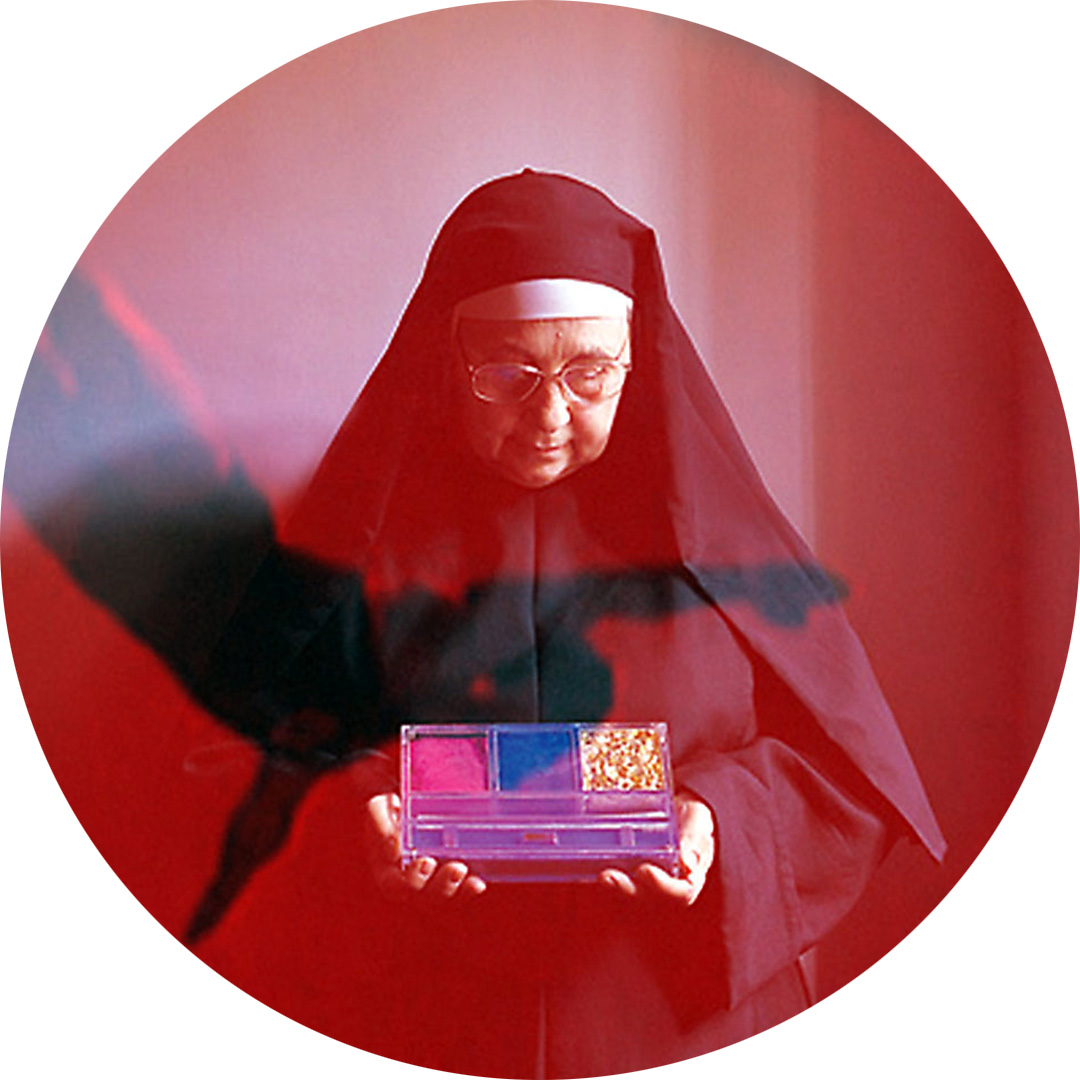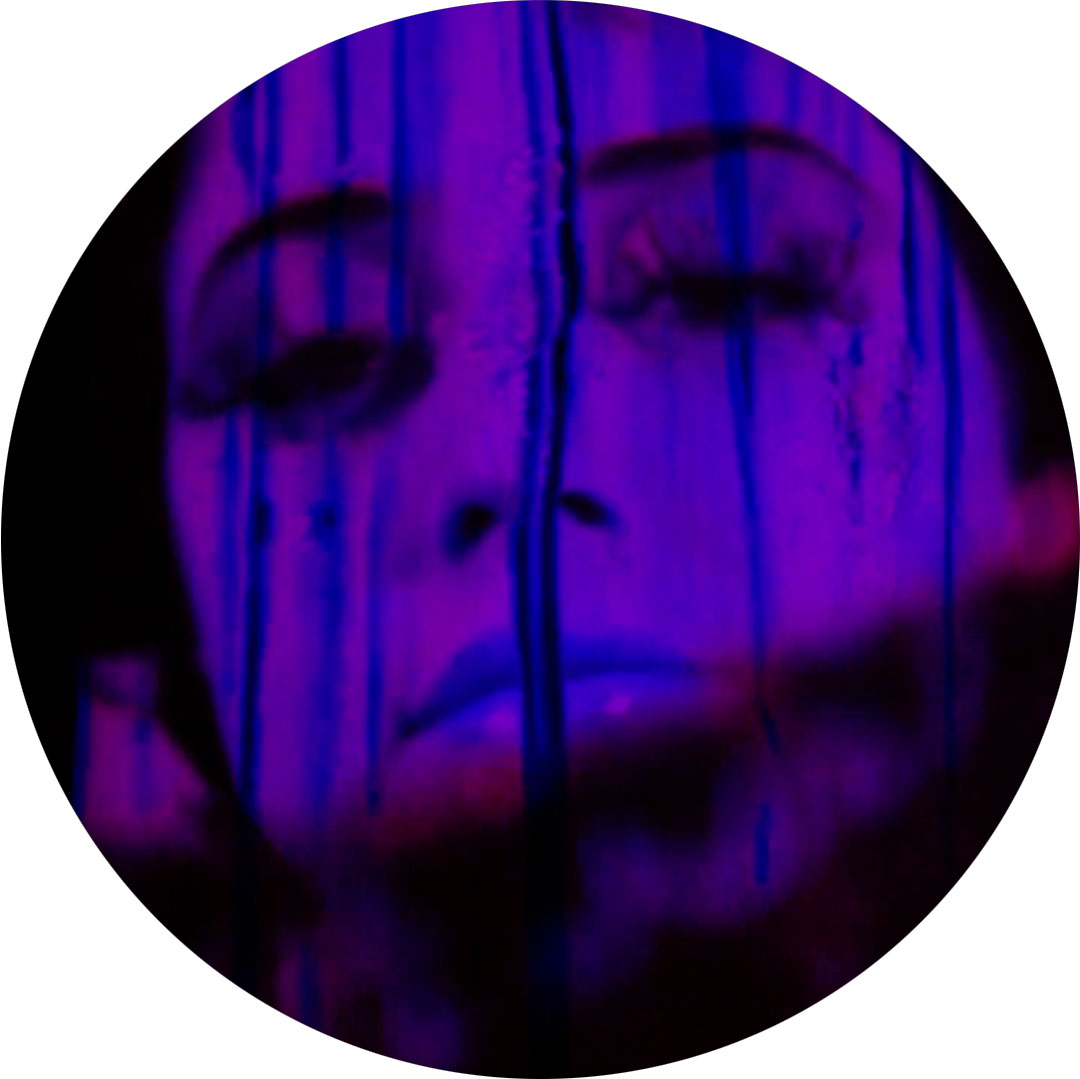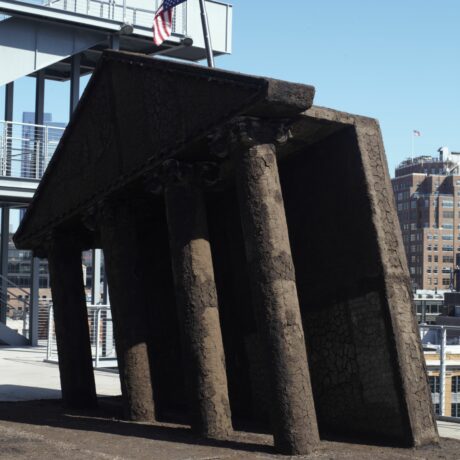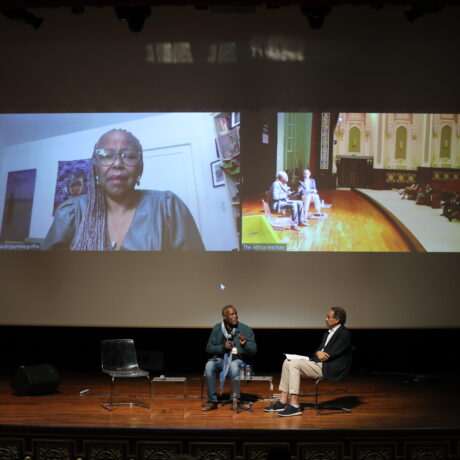
Video artist Mark Dean is known for his looping, incantatory appropriations of music and film references, which often reach towards spiritual transcendence. Unusually among contemporary artists, Dean is also an ordained Anglican priest, and his latest installation works, Stations of the Cross and Stations of the Resurrection, which, among other movies, quote from Psycho, The Sound of Music and Alice in the Cities, are hallucinatory, metaphorical meditations on religious subjects viewed through the prism of cinematic codes. It was curator Lucy Newman Cleeve’s idea to bring Dean together with choreographer Lizzi Kew Ross to create an immersive installation within two imposing churches in London: St Paul’s Cathedral and St Stephen Walbrook.
Could you tell me a bit about the genesis of this project?
I met Mark Dean in 2011 at an Arts Council event about religion and art. We quickly recognized that we shared a sense of frustration with much of the contemporary dialogue about spirituality and art, where “spirituality” is used as an aesthetic term, devoid of any collective metaphysical basis, at times applied with such little precision as to be almost meaningless. We were both interested to find a more articulate translation between the languages of art and theology that did justice to both disciplines. I studied for a degree in Theology before training at the Royal College of Art and Mark had recently been ordained as an Anglican priest. I included Mark’s work in Brittle Crazie Glasse which I curated at Islington Mill in 2012, and in On the (im)possibility of a pure praise poem at Man&Eve in 2013, which also included work by Dom Sylvester Houédard, Aliki Braine and Anna Sikorska. We first started discussing Stations of the Resurrection in 2014, but it was not until March 2016 that I introduced Mark to Lizzi Kew Ross, and suggested it would be interesting to collaborate on the project.
I have known Lizzi for more than ten years (I was introduced to her by the artist Stephen Nelson, who knew of our shared interest in Christianity and art), although we had never previously worked together. Lizzi managed to open up a conversation with St Paul’s Cathedral that evolved over several months. Once the cathedral said yes to the project, everything else, including the funding and the relationship with St Stephen Walbrook, actually fell into place quite easily.
What is the significance of its architectural context?
St Stephen Walbrook and St Paul’s Cathedral were both designed by Christopher Wren to replace churches that had burnt down in the Great Fire. St Stephen Walbrook was Wren’s parish church, and in many ways it was the prototype for St Paul’s, above all its beautiful domed ceiling. There is a striking visual correspondence between the circular architectural motifs found in each church—particularly in the Henry Moore altar at St Stephen Walbrook—and the circular image in Mark Dean’s work Here Comes the Sony. The architectural, historical and visual-spatial elements of the two churches helped to tie together the two events and also provided them with an interpretive framework.
How is the piece experienced by visitors?
Stations of the Cross was experienced as an all-night vigil at St Stephen Walbrook on Easter Eve. Fourteen video works were projected on to the Henry Moore altar, interspersed with readings which members of the audience were invited to deliver, and space for meditation. The event culminated with a dance performance and dawn Eucharist.
The experience is captured and beautifully described in the words of one visitor:
Leaving the Easter motorway madness behind, entering the warm darkness of St Stephen Walbrook at dusk. None of the usual small talk of a private view. Feeling responsible for the friends I have invited, anxious but curious of what is to come…
I focus on the central altar—a Flintsone meteor landed in the City—an oracle about to host the event. Speedy brain & impatient body let go, give in—are stilled. I am caught by the gravitational pull.
The crying stone begins to speak—Julie Andrews imperceptibly breathes, wonder melting to anxiety and back. The Bates Motel sign flickers, a warning of the dark road ahead. The journey begins.
An unhurried procession of chapters, silent pauses in the darkness, familiar & half-remembered clips reminding me of all-night screenings at the Electric Cinema as a child—Fellini, Freud & the Marx Brothers drifting in & out of my dreams & mis-memories.
A sense of tumbling down a rabbit hole, transported to a world of stories with no beginning or end, just an infinite loop of magical middles. A feeling of being invited to a very special intimate & shared event. A generosity on the part of all the contributors, multiple references, poignancy & humour rarely embraced in an art gallery event.
I walk home through the early awakening of London; the readings, the music, the images swirl around my brain. No hard sell. No self-congratulatory pomp. No applause to break the spell. I am left with the silence—not of something arrived but of something just left.
—Oona Grimes
Stations of the Resurrection was an evening performance under the dome of St Paul’s Cathedral. Five dancers from Lizzi Kew Ross & Co performed the premiere of Being Here in the midst of Mark Dean’s twelve-monitor video and sound installation, Here Comes the Sony. The event lasted two hours, during which time the dance was repeated three times.
Rather than retelling the resurrection stories, Being Here explores the paradoxical themes and emotions contained within them, including presence and absence, innocence and guilt, hope and fear, commitment and betrayal, connection and loss, joy and grief. Each of the monitors transmitted the same circular image, produced by filming through the back of a translucent Sony lens cap, so that the logo remains visible in reverse. The soundtrack is fleetingly recognizable as the guitar riff from the opening bars to Here Comes the Sun by The Beatles, although the original track has been progressively extended so no two loops are the same duration. The circular images rotate at different speeds, in sync to the soundtrack, changing hue as they cycle through the colour spectrum. As the music builds, the particular melody of Here Comes the Sun is obscured, although never quite lost, as the sounds merge to create the effect of a peal of Easter bells. The twelve screens correspond to Jesus’ resurrection appearances in the New Testament and the sampled music from Here Comes the Sun by The Beatles is a deliberate pun referencing the coming of The Son, which is further reinforced by the retention of the reversed Sony logo.
Mark Dean brings together the worlds of art and religion. How does this work engage with those two different languages?
The content of the work is obviously rooted in Christian narratives surrounding the death and resurrection of Jesus. But each of the works shown as part of Stations of the Cross and Stations of the Resurrection could be exhibited independently within a fine-art or theatrical-dance setting—indeed, three of the video works have been exhibited previously in gallery settings.
The context in which these works were shown clearly affected their interpretation. Mark took part in both events in a clerical and artistic capacity: during Stations of the Cross, he presided over the Eucharist and during Stations of the Resurrection he appeared at the beginning and end of each of the three performances, to activate the monitors. These incursions—along with the way in which the formal staging of the dance and the readings involved the audience—raised the question of whether these were performance art or liturgical events, or perhaps both.
Is there a feminist dimension to the piece?
All three of us would readily identify as feminists, and the representation of women throughout Mark Dean’s work is clearly significant. I think it’s fair to say that the work rehabilitates or affirms certain groups who have traditionally been marginalized or excluded by the church and by the spheres in which we operate as arts practitioners. The work deals with the representation and experience of “personhood” (irrespective of gender identification or sexual orientation) in a world in which there is a God. It’s also worth noting that Being Here involved some older dancers, as questions of age are equally important to this full expression of personhood.
‘Stations of the Cross’ ran on 15 and 16 April at St Stephen Walbrook and on 26 April at St Paul’s Cathedral, London. stations2017.org








